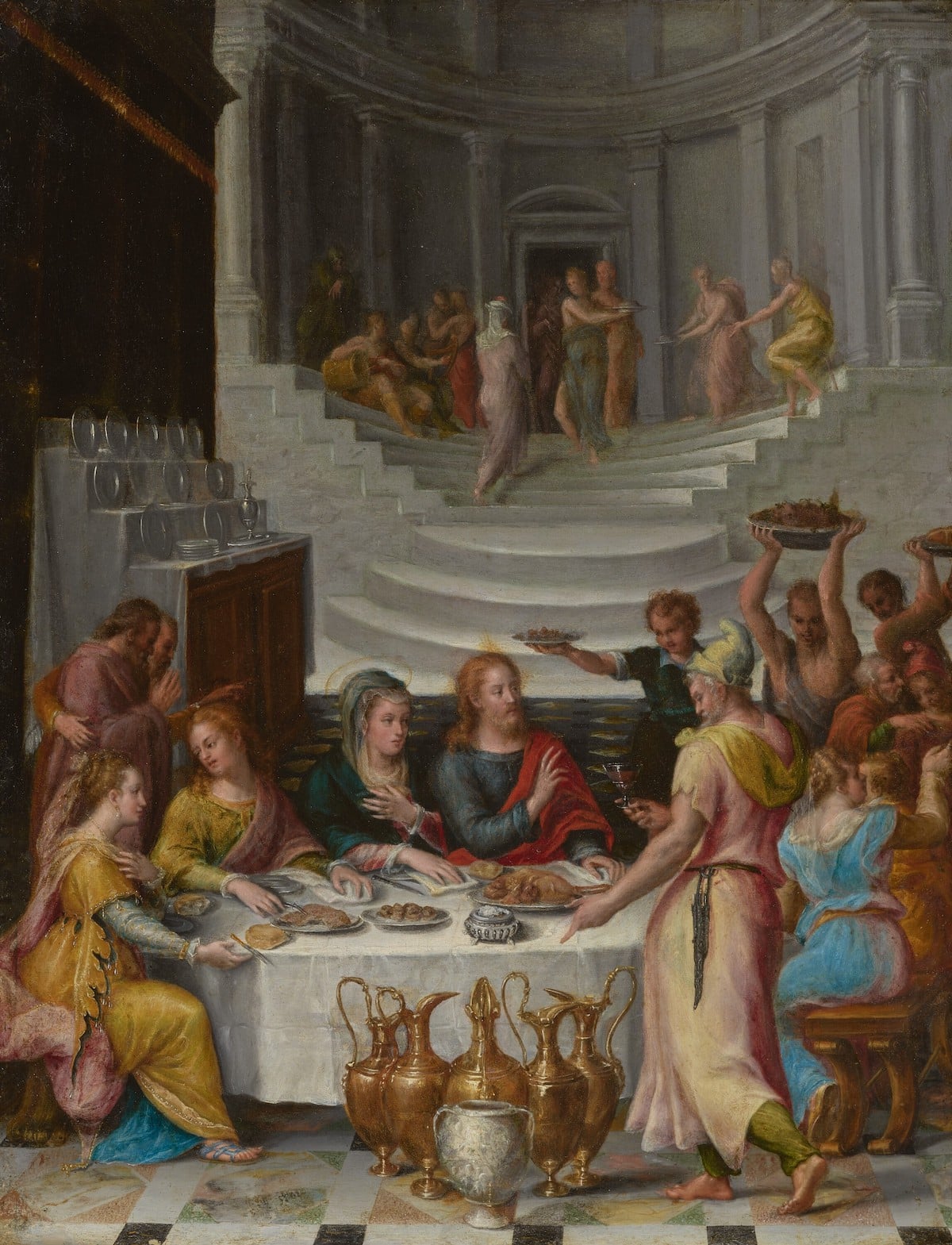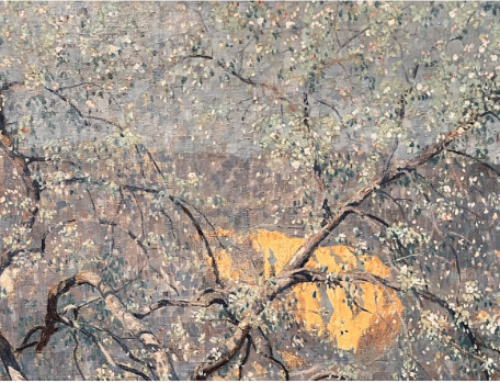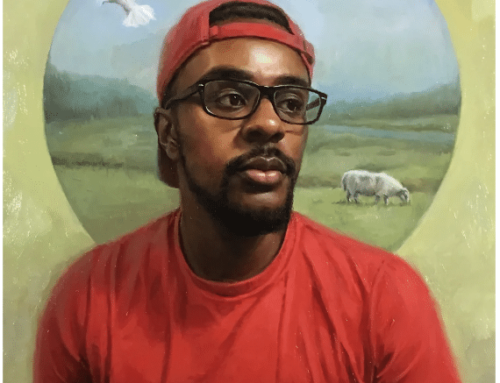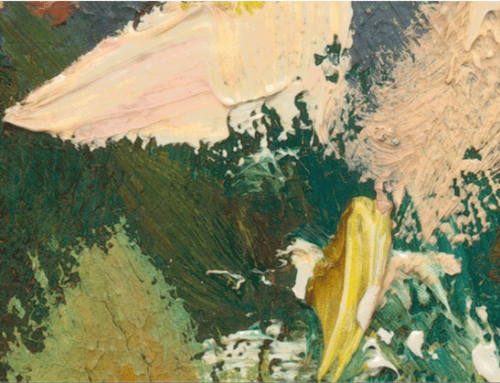Art historians consider Lavinia Fontana (August 24, 1552 – August 11, 1614) the first female “self-supporting artist” in Western art history.LA’s Getty Museum recently announced its acquisition of a painting by Fontana, the museum’s second. “Wedding Feast at Cana” is a small painting intended for private devotion.
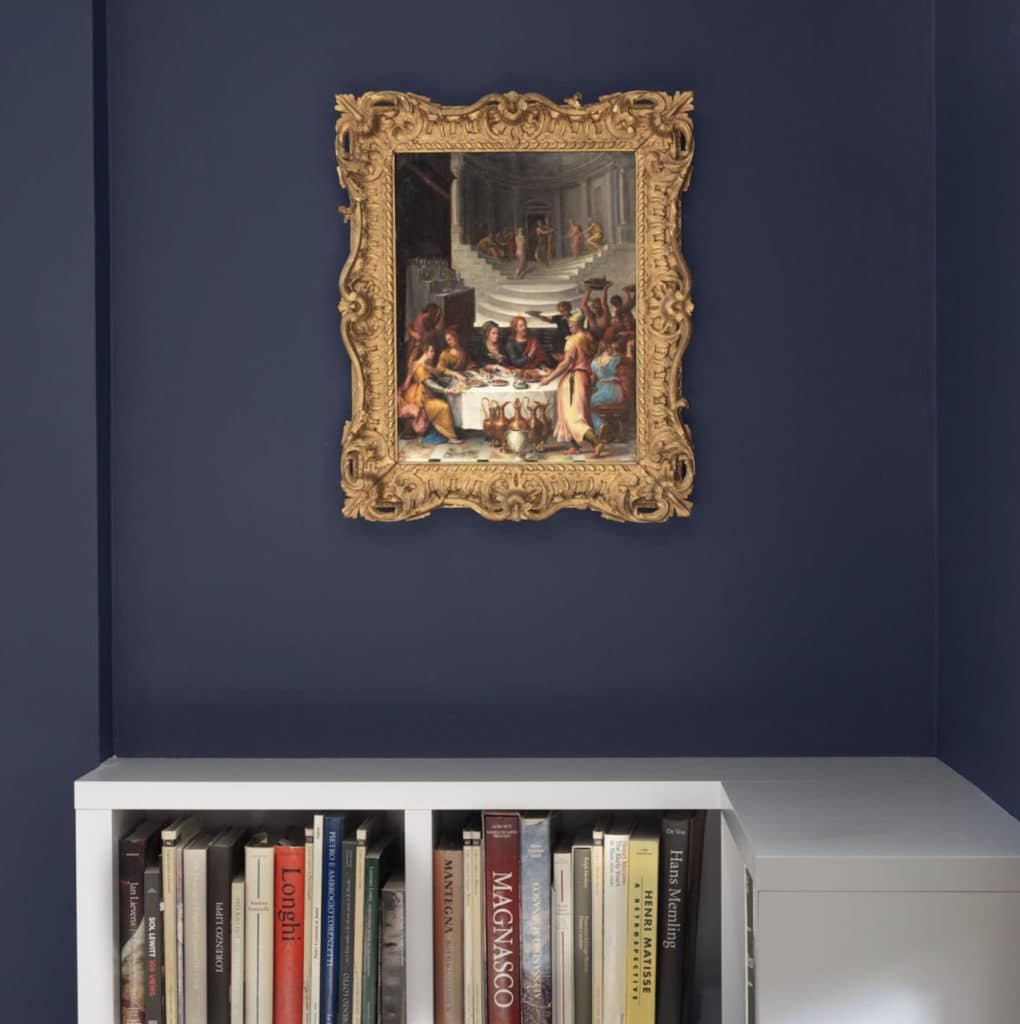
Lavinia Fontana’s Wedding Feast of Cana, showing the intimate scale of this work, which was intended for private prayer.
The painting depicts an episode from the life of Christ from the Gospel of John (2:1-11) in which Jesus, his mother Mary, and his disciples are invited to a wedding. When Mary notices that the wine has run out, Christ delivers a sign of his divinity by turning water into wine at her request.
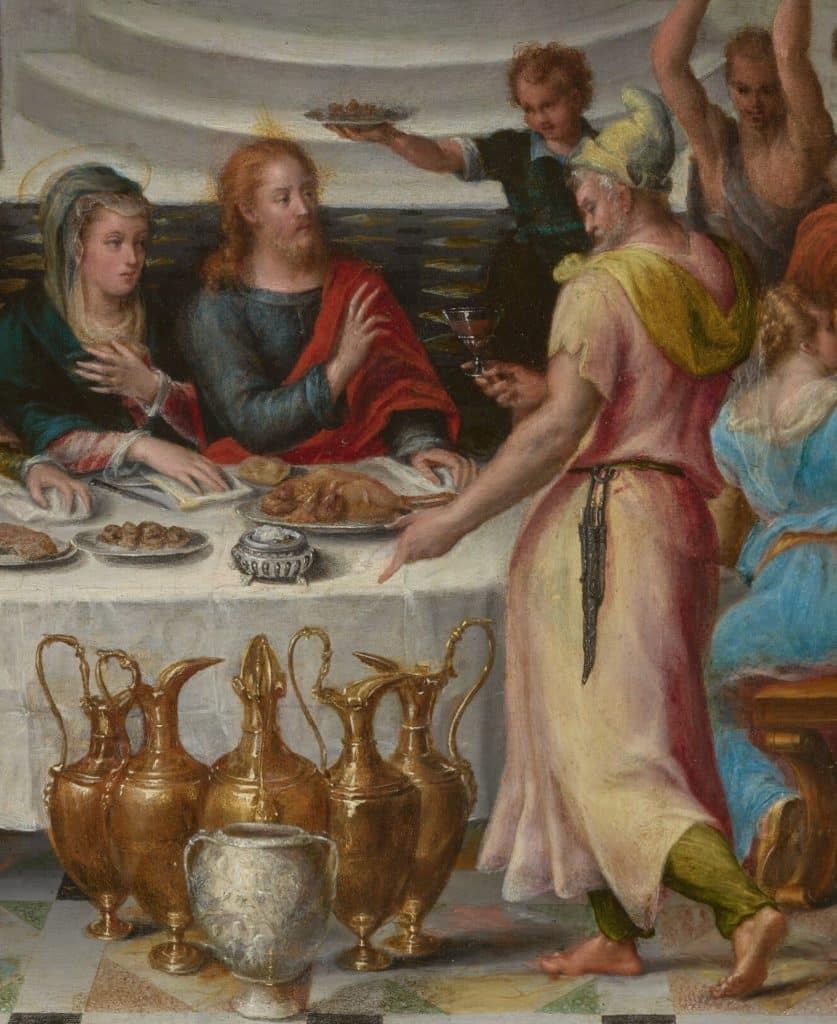
Detail of Fontana’s Wedding Feast at Cana
Like other (male) “career artists” of the Renaissance and Baroque periods (Rembrandt, for example), Fontana supported her family through commissions from wealthy patrons and also worked in the genre of “history painting” (classical mythological and Christian imagery). There’s disagreement about this, but some art historians say she was the first woman artist to paint female nudes.
Fontana “beat the system” that kept women out of the art world. At age 25, she met a fellow painter from a noble family who eventually agreed to become not only her husband but also her agent AND a stay-at-home-dad for their 11 children (only three of whom outlived their mother).
For 20 years beginning in the 1580s, Fontana was the leading portraitist of Bolognese noblewomen and portraitist of choice for the prestigious University of Bologna. Other women followed in her path, though her work is considered the most complex and interesting among them.
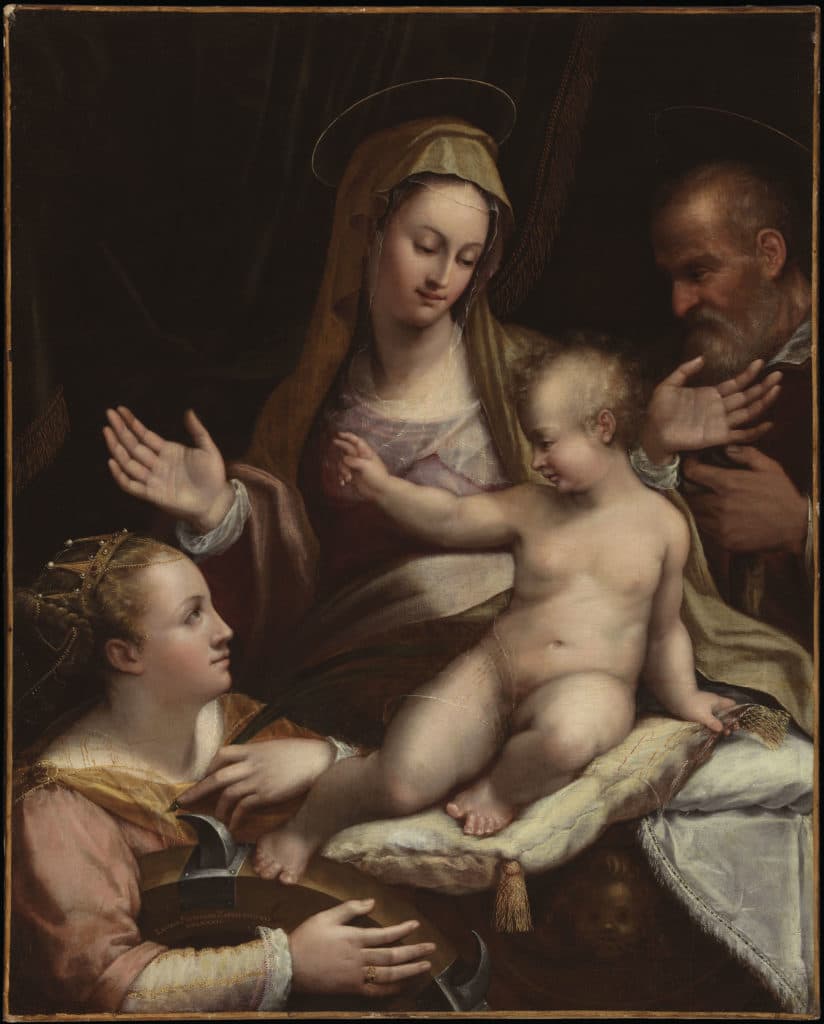
Fontana’s The Holy Family, the other painting by the artist in the Getty’s collection.
In 1609 she moved to Rome, then the equivalent of Paris or New York in terms of the art world, where she became portraitist at the court of Pope Paul V – outside of royal appointments, pretty much the highest rank to which any Western portraitist could aspire. She was showered with numerous honors.
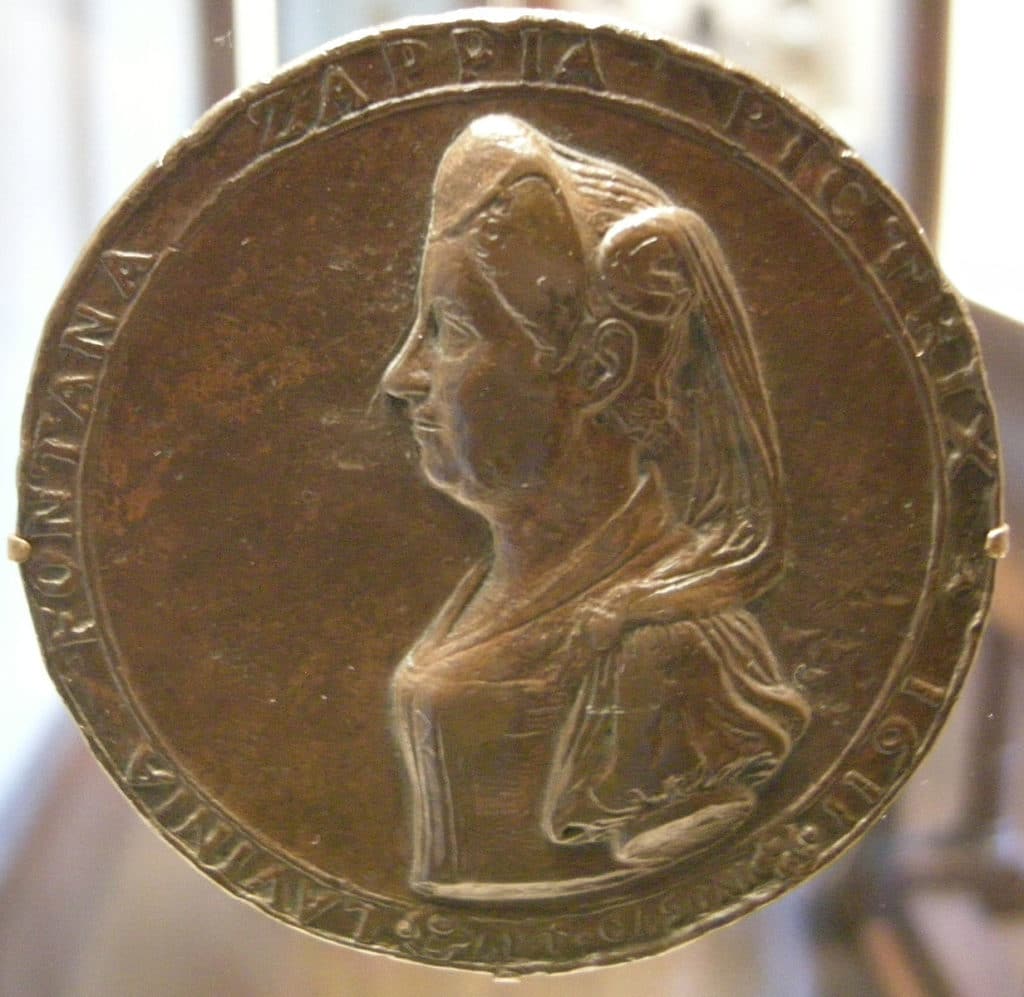
Among her accolades is a bronze portrait medal struck in her honor in 1611, three years before she died. It was made by sculptor and architect Felice Antonio Casoni, who also hailed from Bologna and rose to prominence in Rome – though no one struck a medal in his honor, except perhaps himself, AFAIK.
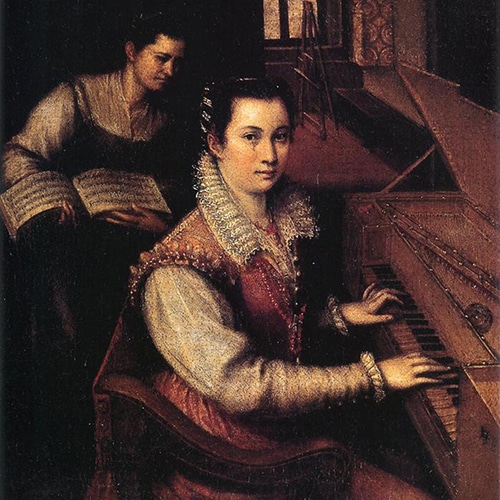
Lavinia Fontana, Self-portrait at the Clavichord with a Servant, 1577, Accademia Nazionale di San Luca, Rome
Marmalade Sky Wins First Place in Salon
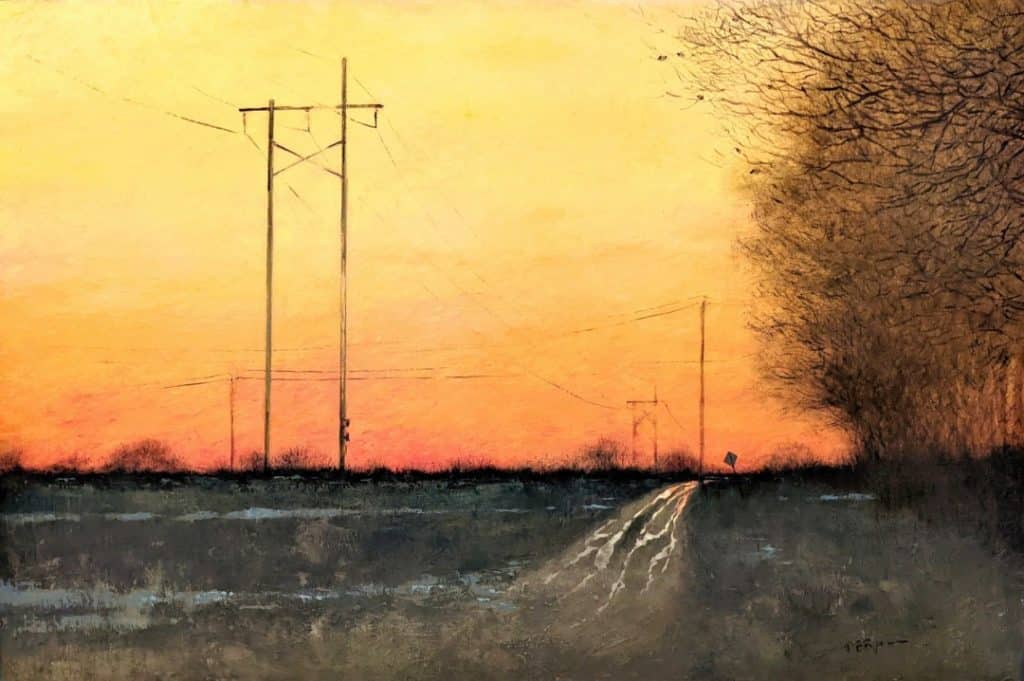
Patricia Burford Ryan, “Marmalade Sky,” winner of the July Salon
Patricia Burford Ryan’s painting Marmalade Sky has won first place in the July Plein Air Painting Salon.
Commenting on the selection, judge Michael J. Ruple fro aux gallery said, “Marmalade Sky was an immediate first choice as soon as I saw it. I was initially drawn to the cinematic high chroma palette, but it was the subtle additions of modernity that kept me in the painting. It’s not heavy-handed like some industrial landscapes or cityscapes, to be honest its almost ordinary, something we’ve all seen driving along the outskirts of a city. I think it’s really special when you can discover beauty in the unexpected, and for that reason I would consider it a great example of the contemporary landscape.”
The monthly Plein Air Salon is an open competition that culminates in a lavish award gala with cash prizes for the best paintings overall in multiple categories. Visit the Plein Air Salon website for your chance to enter your work in the monthly contest, from which the finalists for the grand prizes will be drawn.
In the paint,
Chris

